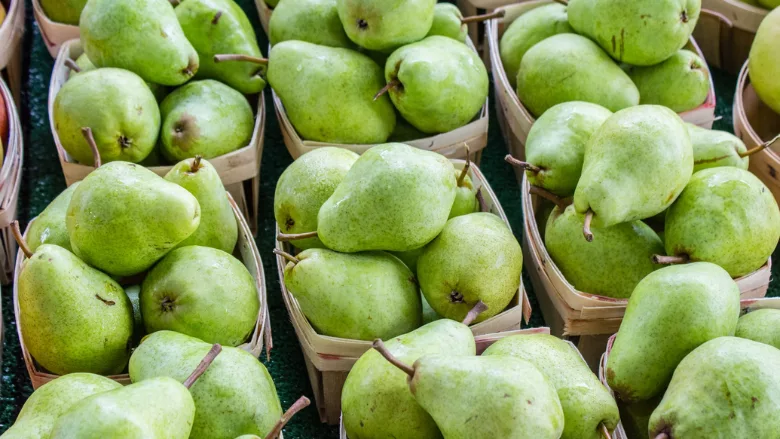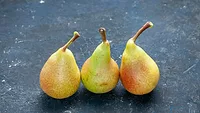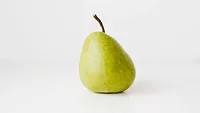Two CPS-Funded Studies Use Metagenomics to Understand Microbial Behavior on Pears in Storage

Image credit: Jonathan Mast via Unsplash
Two complimentary studies funded by the Center for Produce Safety (CPS) are using genomic sequencing technology to examine how storage conditions affect microbial growth on pears, with a focus on Listeria monocytogenes.
The metagenomics techniques being leveraged in both studies involve sampling microorganisms residing on pear skin, analyzing their DNA, and identifying the microorganisms by their DNA using computer software. The study’s researchers explain that metagenomics provide a more comprehensive picture of microorganisms that are present and their behaviors over time, in comparison to traditional methods that rely on culturing and are heavily biased by the specific techniques used.
The first study, led by Laura Strawn, Ph.D. of Virginia Tech University, is looking at changes that occur in microbial communities on whole green Anjou pears, beginning in the orchard before harvest through nine months of controlled atmosphere (CA) storage, with a focus on how key microbial players may affect food safety risks during storage. The researchers are also looking at how L. monocytogenes populations behave on pears in refrigerated and CA storage. Anjou pears were selected for the study due to their long shelf life.
Dr. Strawn’s team first identified culturable microbes (i.e., yeasts, molds, and lactic acid bacteria) on whole pears before storage. Next, the scientists sampled microbial communities on marketable and unmarketable pears under the two different storage regimes during long-term CA storage at three, six, and nine months. Using metagenomics, they created a profile to track microbial population shifts over time.
To study L. monocytogenes behavior, the researchers co-inoculated the pathogen with a common spoilage mold species and other microorganisms found on pears. Preliminary results are showing that pears are not a very hospitable environment for L. monocytogenes. An unintended finding is better understanding the succession of decay-causing microbes, which may help industry identify which postharvest storage practices drive what microbial populations, and reveal the drivers behind pear spoilage.
The second study, led by Meijun Zhu, Ph.D. of Washington State University, is looking at potential shifts in resident microbial populations on pear surfaces during long-term CA and cold storage, and how such changes might influence the persistence of foodborne pathogens. Specifically, Dr. Zhu is hoping to fill a crucial data gap on the dynamics of L. monocytogenes die-off, which will help inform industry food safety plans.
Dr. Zhu’s research involves three pear varieties: Bartlett, because it is the most popular, has rough skin, and is a summer variety; and D’Anjou and Bosc, because they are winter varieties with smooth skins. Additionally, alongside conventionally grown pears, the researchers included two varieties of organically produced pears—Bartlett and D’Anjou—due to the continued growth in organic fruit production. Since organic production practices restrict the use of certain fertilizers and chemicals, microbes found on organic pears may differ from those on conventionally grown fruit.
Looking for quick answers on food safety topics?
Try Ask FSM, our new smart AI search tool.
Ask FSM →
The scientists first inoculated unwaxed pears with a non-pathogenic strain of L. monocytogenes in a food-grade laboratory, and also included uninoculated fruit as checks. With industry collaborators, the researchers transferred the treated fruit to commercial CA and cold storage and removed samples every three weeks over a nine-month period. Whenever samples were taken, the scientists measured L. monoctogenes die-off as well as potential shifts in microbial populations. Preliminary results showed L. monoctogenes populations to quickly decrease and then eventually stabilize.
Dr. Zhu’s team also assessed fruit quality attributes and with the goal of correlating results to microbial data. Metagenomic analyses of the microbial samples are still ongoing. Dr. Zhu hopes that microbial sequencing will enable the identification of potential biological control agents for decay and pathogens, based on interactions.









